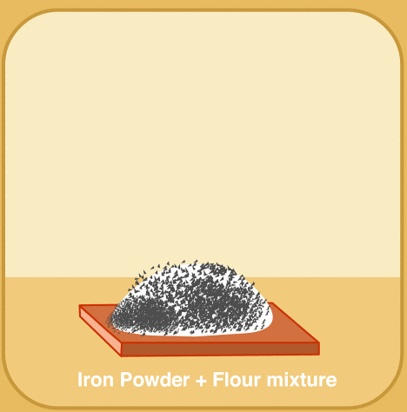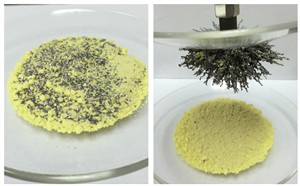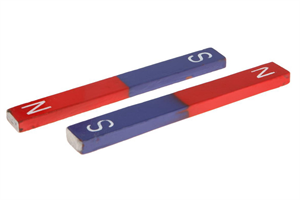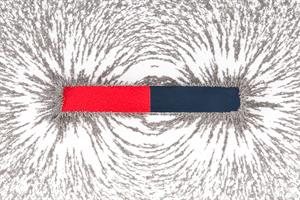
PUMPA - SMART LEARNING
எங்கள் ஆசிரியர்களுடன் 1-ஆன்-1 ஆலோசனை நேரத்தைப் பெறுங்கள். டாப்பர் ஆவதற்கு நாங்கள் பயிற்சி அளிப்போம்
Book Free DemoMagnets are attracting material that work on three important properties. They are,
- Attractive property
- Repulsive property
- Directive property
1. Attractive property:
The first and foremost property of a magnet is its attraction towards a material.
Iron filings:
When a magnet is rubbed against sand or soil, some particles stick to the magnet. The magnet is shaken well to remove these particles of sand or soil.

Attraction of iron filings in sand by a horseshoe magnet
But, still, a few particles stay in the magnet. These particles are small pieces of iron called iron filings. Iron, cobalt, and nickel are the metals always attracted by magnets.

Iron filings mixed in sand gets attracted by a magnet
Poles:
When a magnet is placed in a sheet spread with iron filings, the filings get attracted towards the ends of a magnet.
The ends of a magnet that attract tiny iron filings are called poles.

Bar magnets with poles
All magnets will have two poles, north (N) and south (S) poles.
The north pole is the end of the magnet that points towards the north, whereas the south pole is the end that points towards the south.
The north pole is the end of the magnet that points towards the north, whereas the south pole is the end that points towards the south.
In a container filled with iron filings, a bar magnet is placed. As compared to the middle of the bar magnet, more iron filings stick to the ends. This demonstrates that the attraction between the poles of a bar magnet is greatest. This applies not only to a bar magnet but also to all kinds of magnets.

A bar magnet attracting iron filings at the poles
Important!
Poles of the magnet always exist in pairs.
A bar magnet, even when shattered, acts as a separate bar magnet. For example, if a bar magnet is split into three pieces, six poles are formed in total.

Broken bar magnet
The magnet's length is modified when broken vertically, and each piece functions as a magnet. If a magnet is broken horizontally, the length of the new parts and their polarity remain unchanged. The strength of the magnet is diminished in both cases.
Reference:
https://upload.wikimedia.org/wikipedia/commons/4/43/CuttingABarMagnet.svg